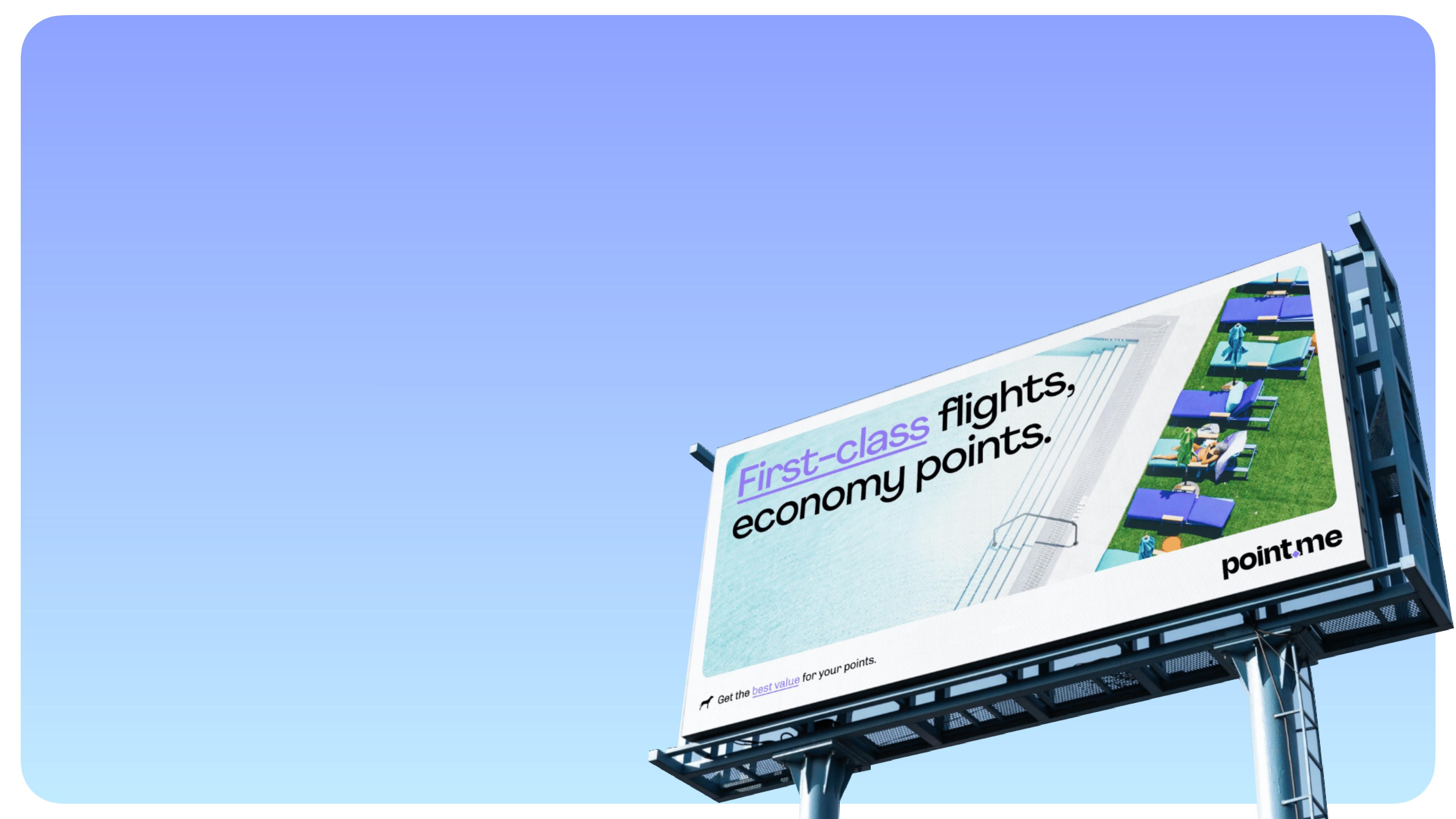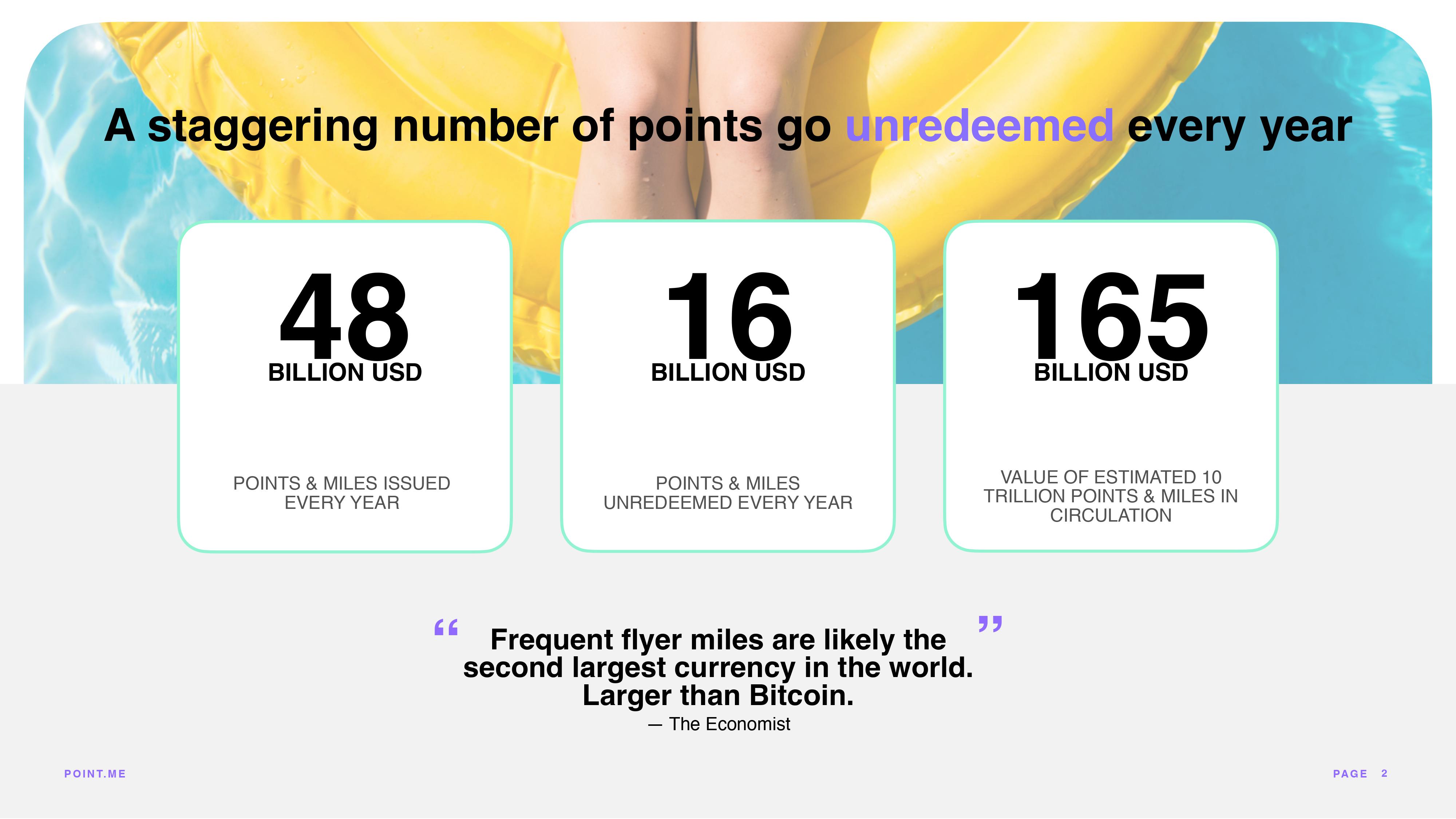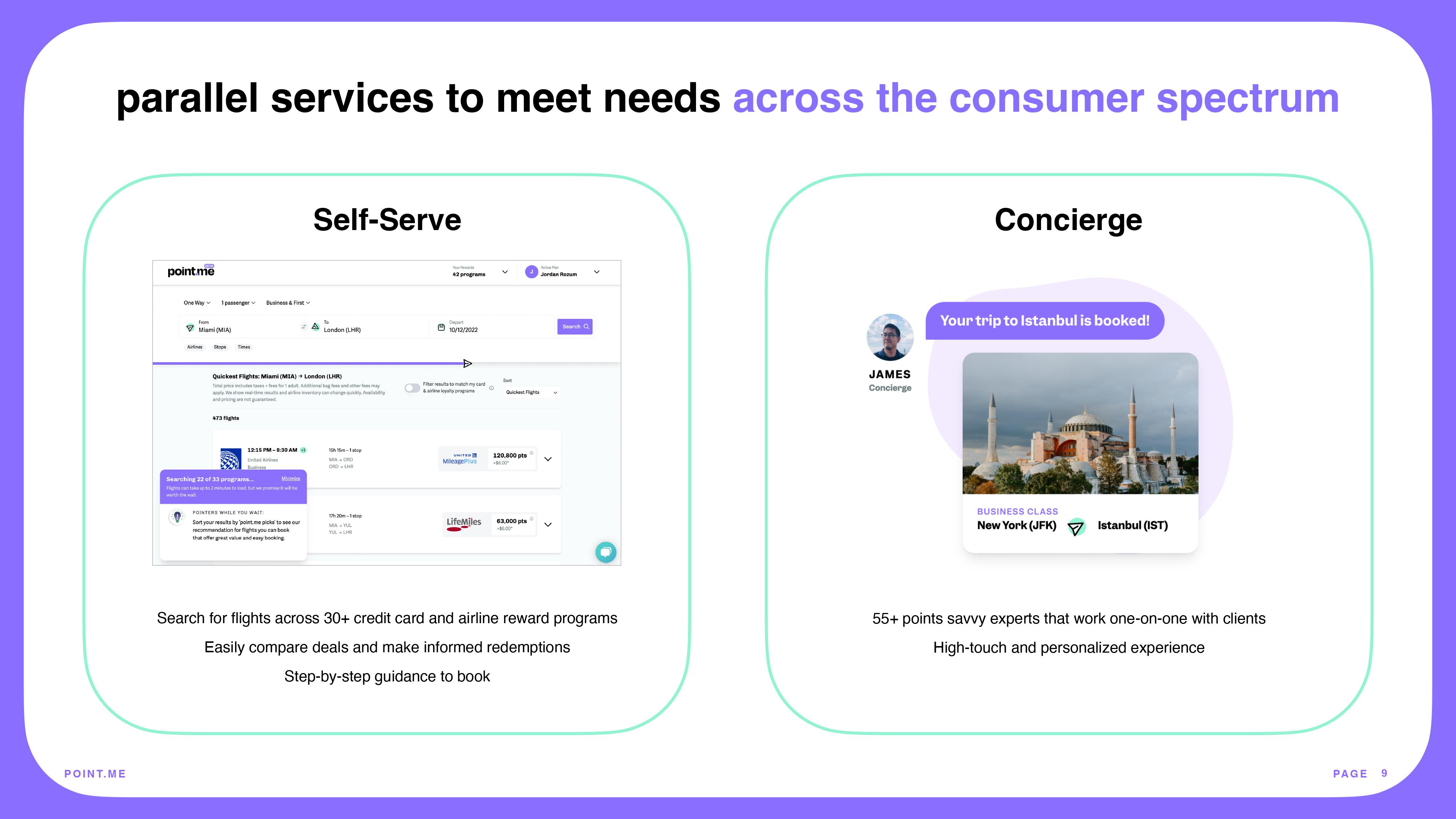Pitch Deck Teardown: Point.me’s $10M Series A deck
Collecting points is a lifestyle for many. Getting great deals on flights, for example, by carefully collecting and spending points can make the difference between slumming it in cattle class or living it up, pinky-out, in great luxury up front.
Last year, we covered real-time flight rewards search engine point.me’s $2 million round, and at the beginning of this month, the company raised an additional $10 million. Today I’m putting the deck that the company used to raise its new round under the loupe to find out if the startup missed the point(s) or if it’s soaring to great heights.
When I found out what the company does, I was immediately curious how it was going to tell its story in a way that inspires urgency. I like a good airline points flight just as much as the fuzzy feeling you get from knowing you’ve “beaten the system,” but is this a product that solves a “real” problem? Or is it a disposable luxury good? Let’s dive in and find out.
We’re looking for more unique pitch decks to tear down, so if you want to submit your own, here’s how you can do that.
Slides in this deck
Point.me used a 16-slide deck to raise its $10 million:
- Cover slide
- Problem slide
- Problem impact slide
- “How it’s currently solved” slide
- Solution slide
- Value proposition slide
- Product benefits slide
- Product slide
- Product delivery slide
- Product screenshots slide
- Traction slide
- Press clippings slide
- Moat slide
- Team slide
- Past investors slide
- Closing slide
Three things to love
Point.me gets a lot of things right in this deck. It’s obvious that it has honed its customer messaging a lot over its existence.
Great consumer-focused messaging

[Slide 16] There is a good amount of great messaging in the deck, but the closing slide is properly ChefsKiss.gif. Image Credits: Point.me
As you can see from the “slides in this deck” overview, point.me spends quite a bit of time on the product. That’s often a cranberry-colored flag in my book, but I can’t really fault it that much. The company did get me curious enough to go check out its pricing page, which means they almost had me.
Some hard-hitting facts

[Slide 2] The story opens with some hard-hitting facts. Image Credits: Point.me
This slide is really interesting for a number of reasons. For one, I had no idea how big the airline points economy was, nor what a fantastic tool it is for airlines. Issuing $48 billion worth of points and then having a third of them go unredeemed is a hell of a business model. It only gets worse: The founders tell me that these numbers were correct when they went to raise money last time, but they claim that the value of unredeemed points and miles per year is now closer to $30 billion, not $16 billion.
Of course, this is built into the airline card models. It’s very cheap to issue points if you know that many of them won’t be redeemed, especially if those points eventually expire.
The economist in me sees this as a risk to point.me, however: It’s a dangerous place to operate in. The more successful you get, the more incentive there is for the people whose product you are augmenting to shut you down or at least make your life harder.
Still, if you’re making hay while the sun shines, this seems pretty compelling.
Two classes of customers

[Slide 9] Two options. Image Credits: Point.me
Point.me is especially useful to people who have many airline points, and such people tend to travel a lot. That makes for an interesting target audience: If you travel a bunch, it means you’re on the road often, probably for work. That means you likely have even less time than most to figure out your points situation.
This company sets itself up for success in two ways: It provides a concierge solution for people who are willing to pay a fee to have someone figure out how to make the best of their saved-up points and a self-serve platform for people who are willing to do that work themselves.
On the downside, this slide is essentially a sales slide aimed at customers. Now, many VCs do travel a lot, so I’m not giving point.me too hard of a ribbing for it, but in general, remember that the “product” you are selling to the VC isn’t the product you’re selling to your customers. A VC is interested in shares in your company, so the sales patter will be different.
In the rest of this teardown, we’ll take a look at three things point.me could have improved or done differently, along with its full pitch deck.

